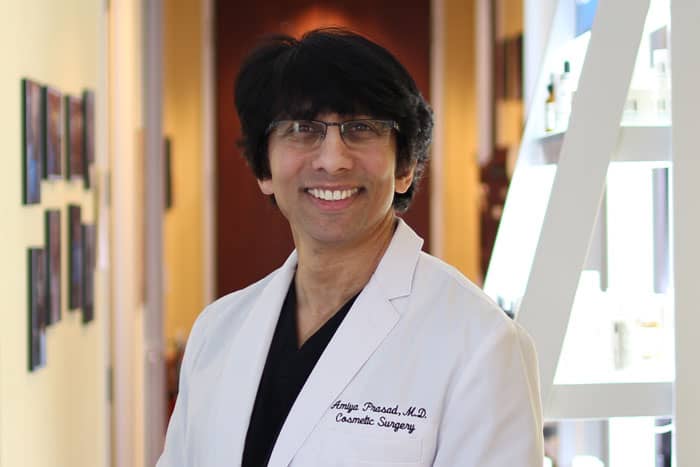Hyaluronidase Injection: Effects on Cosmetic Fillers and Natural Hyaluronic Acid
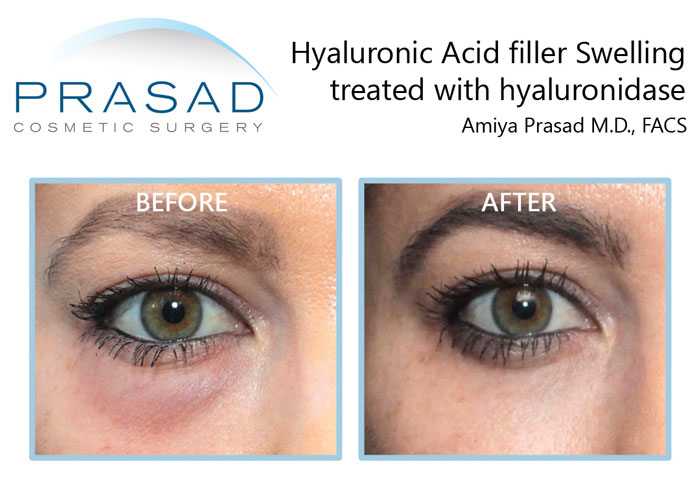
I see a lot of people who are unsatisfied with the hyaluronic acid filler placement done by other practitioners, both physicians and non-physicians. I’m frequently told that the patient had received multiple hyaluronidase injections and still wasn’t looking better. They claim that the practitioner was purposely careful when dissolving the hyaluronic acid filler in order to prevent making the patient look worse because the hyaluronidase could alter the body’s naturally occurring hyaluronic acid. I’ll explain how I use hyaluronidase in my practice to aid patients who have issues after having hyaluronic acid fillers.
Uses of Cosmetic Fillers and Hyaluronidase
I use hyaluronic acid fillers extensively in my practice. I utilize these fillers to provide volume to the lips, cheeks, chin, jawline, and to correct hollowing under the eyes.
I also use hyaluronic acid fillers to treat lines, acne scars, and wrinkles on the face. I often use hyaluronic acid in conjunction with platelet-rich plasma (PRP) to improve skin quality in the face, neck, and decollete through a treatment known as Skin Boosting.
I also see a lot of people who have been treated elsewhere and need their hyaluronic acid filler removed as soon as possible, therefore hyaluronidase is frequently used in my practice.
This concern about the potential loss of natural hyaluronic acid in the body can be put into perspective when you understand where your natural hyaluronic acid actually exists.
Furthermore, if there is an indication for needing hyaluronidase, it’s usually for a situation that needs urgent and definitive action.
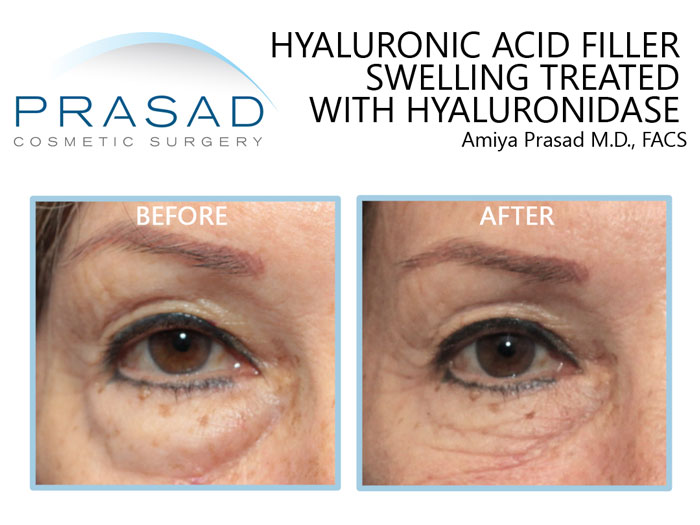
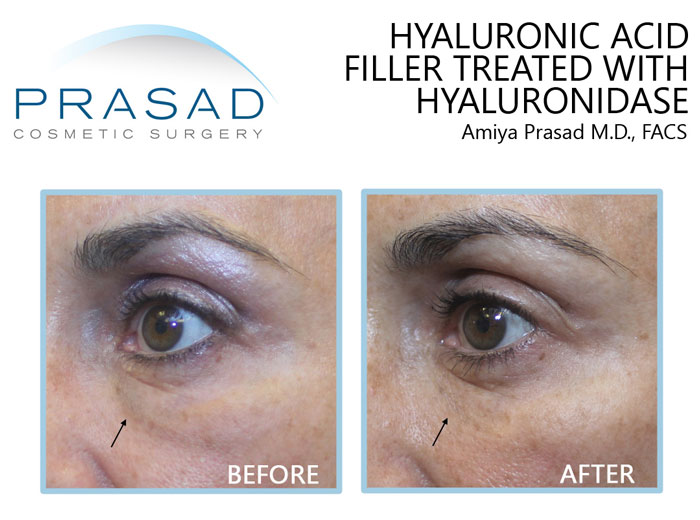
Hyaluronidase Injection to Remove Filler
I meet a lot of patients who have hyaluronic acid fillers under their eyes and cheeks that need to be dissolved. This could indicate that the filler is just beneath the skin, in the muscle, or even behind a structure known as the orbital septum. The orbit refers to the region behind the septum that contains the under eye fat pockets. This is also the anatomical space that the eye occupies.
I often see placement of filler to camouflage under eye bags actually caused the under eye bags to appear even larger. All of the levels of tissue where the hyaluronic acid has ended up require, in my opinion, skill and familiarity with this anatomy, which as surgeon I’m familiar.
In fact, long before hyaluronic acid fillers were developed, hyaluronidase was utilized in ophthalmology to improve the absorption of local anesthesia behind the eye prior to cataract surgery.
I routinely performed this placement of anesthetic with hyaluronidase before cataract surgery using blunt needles. This method is known as retrobulbar injection. Needless to say, this necessitated a thorough understanding of the anatomy of the fragile structures in a very small space including the optic nerve and other critical eye structures. I am quite familiar with the regions around the eyes since I conduct so much eyelid surgery. I use accuracy while inserting hyaluronidase to dissolve the hyaluronic acid filler, and I have had consistent success.
I discovered that being a surgeon has been quite beneficial in both the injection of hyaluronic acid filler, and the dissolution of hyaluronic acid with hyaluronidase. It all boils down to your level of familiarity with this anatomy.
When it comes to improper filler placement, we have the conceptual issue of native hyaluronic acid loss, as well as the pressing circumstance of an unhappy individual who frequently takes days off work because they don’t like how they look. I address this often emotionally charged issue by performing conservative and precise placement of hyaluronidase. These patients are relieved and generally happy with their outcome without any complaint about their appearance as a result of the hyaluronidase treatment.
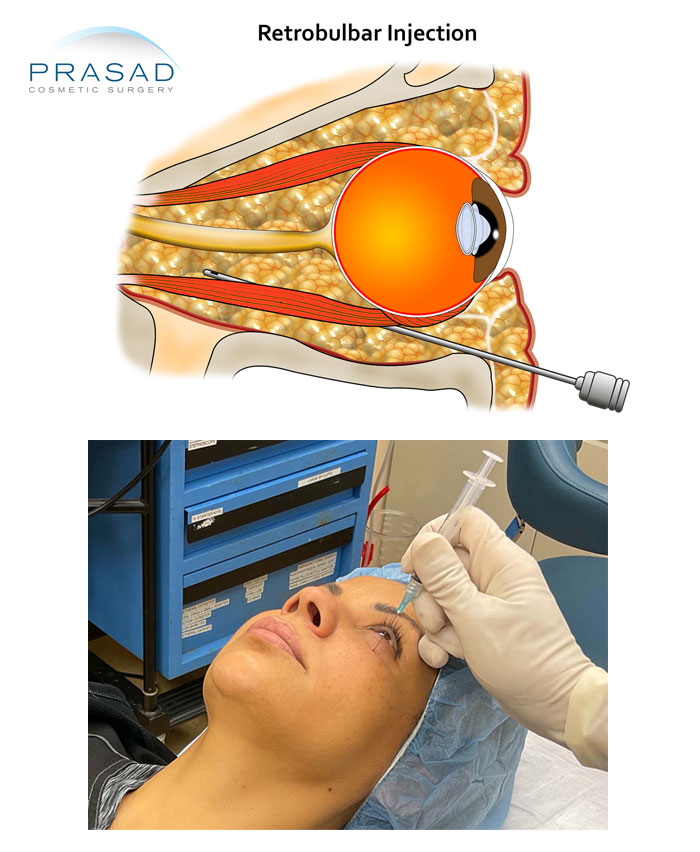
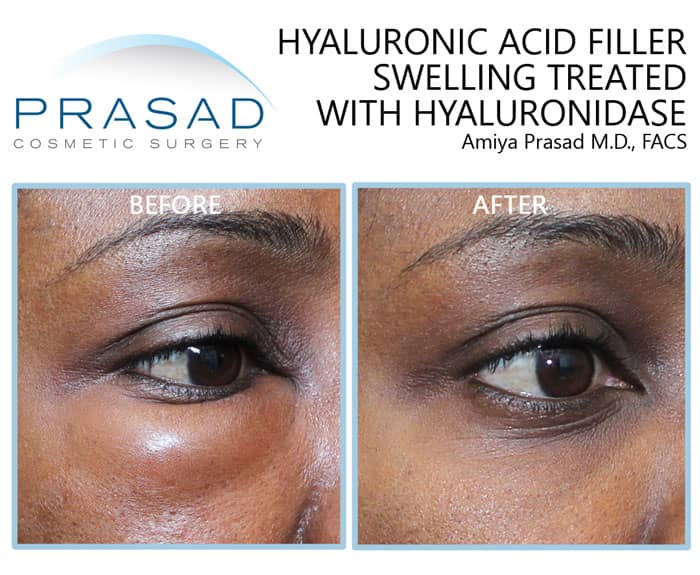
In conclusion, although hyaluronic acid native to the area that needs to be treated may be affected, in my clinical experience, this is less important than dissolving the hyaluronic acid responsible for an undesirable outcome.
Native hyaluronic acid, such as in the skin to retain moisture, and in between the joints for lubrication, is constantly turned over by the body’s native hyaluronic acid. Injectable hyaluronidase affecting the body’s own hyaluronic acid is minimal. The body quickly replenishes its own hyaluronic acid. When hyaluronidase injections migrate past the treatment area, it doesn’t move far, so impact is minimal, and native hyaluronic acid is soon replenished.
I hope you found this information helpful.
Hyaluronidase Injection Manhattan, NYC and Long Island, New York
Dr. Amiya Prasad is a board-certified cosmetic surgeon and a fellowship-trained oculofacial plastic and reconstructive surgeon. He’s been in practice in Manhattan and Long Island for over 25 years.
To schedule an appointment, fill out the contact form below, or you may call any of our offices at (212) 265-8877 for Manhattan, New York City; (516) 742-4636 for Garden City, Long Island; or (703) 356-1336 for Vienna, Virginia.

